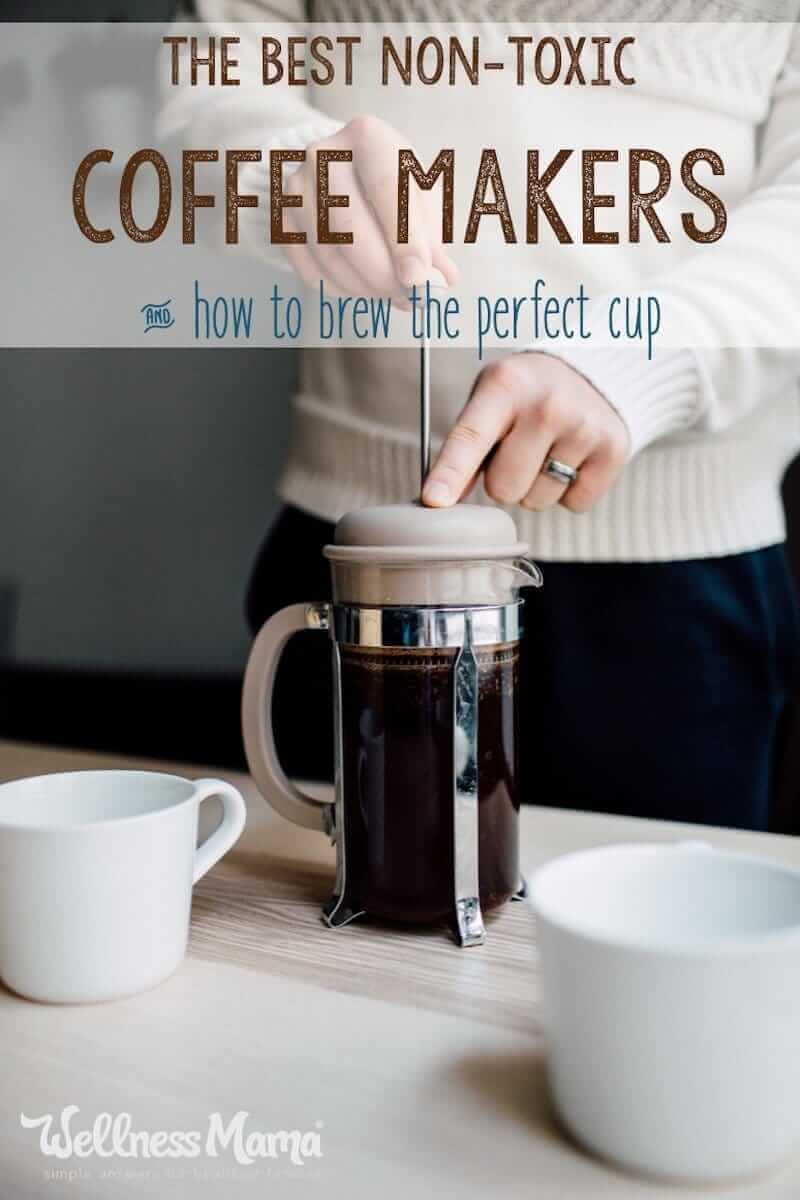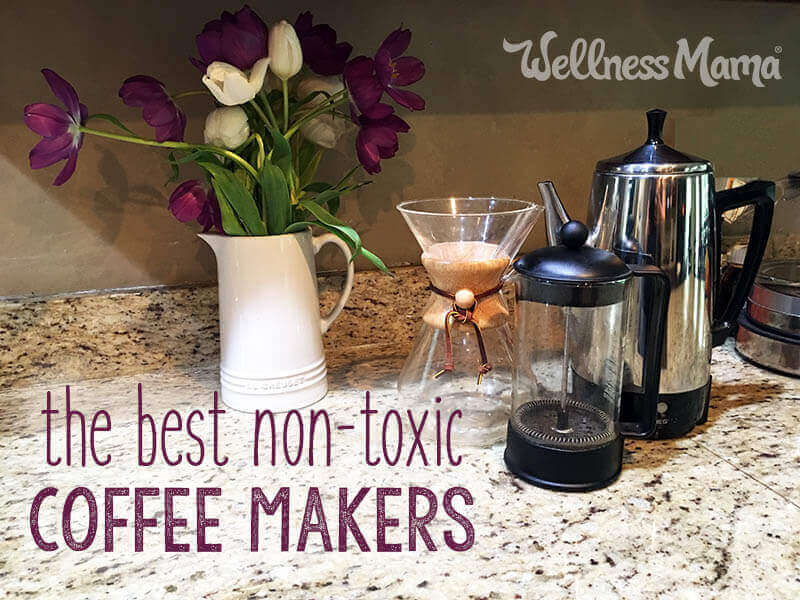How important is a coffee maker in most homes? According to some sources, excluding water, people consume coffee more than any other beverage in the world, and it is the second most traded commodity. Though the health benefits of coffee can be debated, most people (myself included!) consume it in large amounts every day.
How much coffee exactly? Well, the world consumes over 2 BILLION cups of coffee a day. This means that the way we choose to drink coffee can have a big impact on our health and on the environment.
The Rich History of Coffee
According to one (very interesting!) legend, Ethiopian shepherds first discovered the stimulating properties of coffee after noticing that their goats had extra energy after eating coffee berries. A little research uncovers many other interesting facts about coffee’s history:
- The French philosopher Voltaire consumed up to 50 cups of coffee a day. (Fun fact: The lethal dose is 100 cups/day!)
- Teddy Roosevelt drank 16 cups per day.
- The Italian government regulates espresso because it is considered an essential part of daily life (similar to how carbohydrates and proteins are listed and regulated on food packaging here). Baristas are also highly respected in Italy.
- Bach wrote an opera about a woman who drank too much coffee.
- The word “cappuccino” comes from the similarity of the drink in color to the robes worn by Capuchin monks.
- The King banned coffee houses in England in the 1600s because he thought people were conspiring against him in coffee houses.
- Before coffee gained popularity, beer was the breakfast drink of choice in the U.S.
- The world’s most expensive coffee, Kopi Luwak, costs $600 per pound and is literally coffee beans eaten and excreted by a Asian Palm Civet (a large cat).
- Money may not grow on trees, but coffee does. The coffee “bean” is actually the roasted seed of a bright red berry (making it a fruit).
So we know the world universally loves coffee … but is it healthy?
The Effects of Coffee on Health
 Although I’ve covered the health risks and benefits of coffee before, here’s a recap of some of the issues with consuming a large amount of coffee:
Although I’ve covered the health risks and benefits of coffee before, here’s a recap of some of the issues with consuming a large amount of coffee:
- Caffeine dependence – Over-reliance on caffeine as a stimulant can affect the adrenals in a negative way.
- Pesticide exposure – Coffee is a notoriously heavily sprayed crop.
- Mold – Dave Asprey has several good articles on how much mold coffee from inferior sources can harbor.
The good news is, this doesn’t mean you have to give up coffee. Coffee contains antioxidants and other proven health benefits, and there are ways to limit its downsides:
- Something as simple as when you have your coffee can make a difference. Consume coffee between 9:30 and 11:30 a.m. to protect natural cortisol patterns.
- Add a boost of healthy fats ups the benefits of a morning cup of joe.
- The way you make your coffee makes a difference to your health. Choosing a healthy coffee maker is an important way to maximize coffee benefits without adding harmful chemicals or burdening the environment.
The Problem with (Some) Coffee Makers
Even if you choose organic and fair trade coffee to avoid the pesticides, some unsavory substances may end up in your brew from other sources.
Ditch the Pods!
Unfortunately, some modern methods of consuming coffee carry their own set of risks. For instance, the popular coffee pods (or k-cups) have become an increasing burden for the environment. Over 10 billion of them ended up in landfills last year alone! Endocrine-disrupting plastic chemicals from the pods can end up in the finished coffee, and these plastics have been linked to various health problems.
Even regular coffee makers (and coffee pod machines) contain plastics that come in contact with hot liquid. These can leach plastic chemicals into the finished coffee.
Yep … Mold in Your Coffee, Again
It makes sense if you think about it. The perpetually dark, wet, and warm environment in the tubes of many coffee machines provides the perfect environment for mold, mildew, and even biofilms to grow.
In fact half of all coffee mugs tested contained mold spores, potentially from the tubing inside coffee makers, and unfortunately the hot water and acidity of coffee is not enough to kill this mold.
Safer Non-Toxic Coffee Makers (That Make Better Coffee Too!)
Though modern drip coffee makers are certainly a convenient way to make coffee, there are other much healthier options that (in my opinion) produce a much better cup of coffee. These are some of my favorite non-toxic coffee makers:
French Press
There are some great French Press options in the coffee maker world. A French Press allows you to have control over the temperature and intensity of your coffee. The water must be pre-heated using another method, but French Press coffee makers don’t require any electricity or heat. They don’t keep coffee warm like a drip coffee pot would but are a great option for making a couple of cups of high-quality coffee. As an added bonus, they can also be used to make tea.
Traditional French Press coffee makers (like this one) are typically glass with a stainless steel interior filter, but there is now also a completely stainless steel French Press machine that won’t crack or break like some of the glass options.
Pour-Over
As the name suggests, this method of brewing involves pouring hot water over coffee grounds and letting gravity do the work. Unlike the French Press, there isn’t a way to push down the coffee to speed up the process, and the pour over method does take a little longer. I find that the extra time and effort are worth it for the quality of the coffee. In fact, This many high-end coffee shops use the pour-over method.
Popular pour-over brewing options include:
- The Chemex – An all-glass system that has won awards for its design and is even on display at the Museum of Modern Art in New York City. It does require filters and I personally like either the unbleached disposable filters or a stainless steel reusable filter.
- Cone Coffee Drippers – Slightly less expensive, simple cone filters (like this stainless one) or this ceramic Hario) also use the pour-over method and are typically used to make one cup at a time.
- Ratio Coffee Maker – This is like a pour over coffee maker but is electric and automatic, so you don’t have to stand over it and manually pour the water. It has no plastic parts (hurray!) and makes some of the best coffee I’ve ever tasted! Check it out here.
Old-Fashioned Percolator
What’s old is certainly often new again! Old-fashioned percolator coffee makers are a great alternative to drip coffee pots. Many of us may remember these iconic machines even though they lost popularity (largely due to modern drip coffee pots and more recent coffee pod brewers). Percolators don’t require any additional equipment or filters though, are easily cleaned, and plug in much like a drip machine. They also keep coffee warm like a coffee pot, so they are a good option for anyone who likes having a pot of warm coffee ready for longer than a few minutes.
Just make sure to use a completely stainless steel model for both durability and to avoid plastic.
Stainless Espresso Makers
The traditional Bialetti espresso makers are often made of aluminum (my husband has used one since college and refuses to get rid of it, much to my chagrin!) instead of steel. Though harder to find, stainless steel stove-top espresso makers work just as well and don’t have the health risks of aluminum. These are a good option for those who prefer espresso to regular coffee.
Coffee Makers: Bottom Line
Don’t let a mold-infested plastic coffee maker ruin a good cup of coffee. Try one of these non-toxic coffee makers. Many have the added benefit of not needing disposable filters and create a better cup of coffee anyway!
Are you a coffee drinker? What is your coffee maker of choice?



Leave a Reply